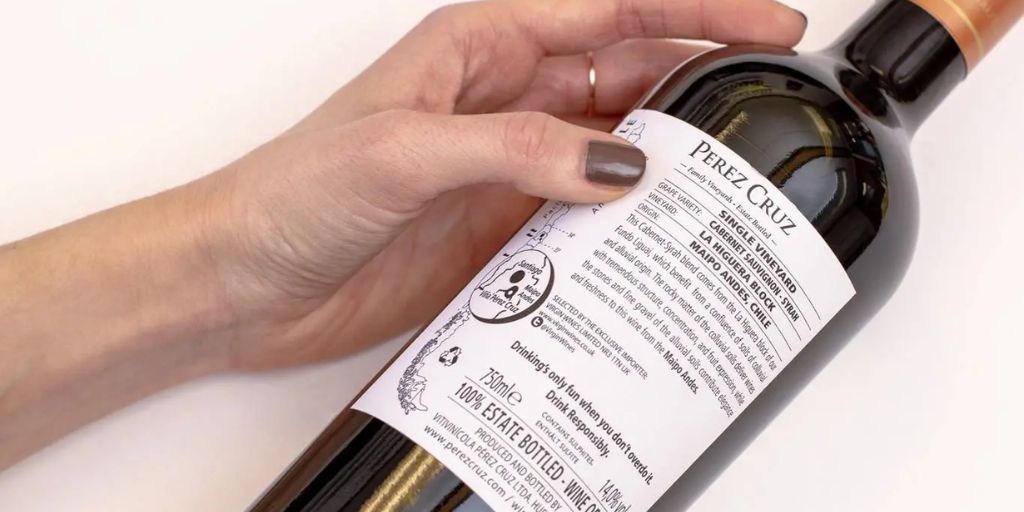For many people, wine labels can seem like a jumble of words, numbers, and terms that are hard to decipher. With so many wines to choose from, figuring out what’s inside the bottle based on the label alone can be overwhelming. However, understanding the key components of a wine label is essential for making informed decisions when buying wine.
In this guide, we’ll break down the key elements of a wine label and explain what they mean, helping you to confidently choose a bottle of wine that fits your taste and needs.
1. The Wine’s Name (Brand or Producer)
The first thing you’ll notice on any wine label is the name of the wine, which typically refers to the brand or producer. This is often the most prominent feature on the label, and it tells you who made the wine. While some wine names are unique, many are also tied to a specific region or vineyard.
What You Need to Know:
-
Producer: The producer is the winery or brand that made the wine. It may be a large winery with many different wines or a smaller, more boutique producer. A well-known producer often signifies quality and consistency.
-
Vineyard Name: Sometimes the label will include the name of the vineyard or specific estate where the grapes were grown. This is often an indicator of the quality of the wine, especially in premium wines.
Why It Matters:
The producer’s reputation and the vineyard’s location can give you clues about the wine’s quality and flavor profile. Famous wine regions, such as Bordeaux in France or Napa Valley in California, are known for producing wines of high quality, and the producer’s name often reflects this.
2. The Grape Variety (Varietal)
One of the most important pieces of information on a wine label is the grape variety, also known as the varietal. This is the type of grape used to make the wine, and it can tell you a lot about the wine’s flavor and style. Common grape varieties include Chardonnay, Cabernet Sauvignon, Merlot, Pinot Noir, and Sauvignon Blanc, but there are hundreds of different types used to make wine.
What You Need to Know:
-
Single Grape Varieties: In many cases, a wine will be made from just one type of grape, such as a bottle of 100% Cabernet Sauvignon. The grape variety will often be printed on the label.
-
Blends: Some wines are blends of different grape varieties. For example, a Bordeaux red wine is typically a blend of Cabernet Sauvignon, Merlot, and Cabernet Franc, among others. If the wine is a blend, it might list the grape varieties used or simply say “Red Blend” or “White Blend.”
Why It Matters:
The grape variety significantly influences the wine’s taste, aroma, and body. For example, Cabernet Sauvignon is typically bold and tannic, while Pinot Noir is light and fruity. Knowing the grape variety can help you anticipate the flavor profile of the wine.
3. The Region or Appellation
Wine regions, or appellations, are geographic areas where wine is produced, and they often play a major role in determining a wine’s characteristics. Many wines, especially in Europe, are labeled with the region or appellation from which the grapes were grown. In the United States, wines are often labeled with the state or region, but many wines also include the specific vineyard or sub-region.
What You Need to Know:
-
Old World vs. New World: Wine labels from “Old World” regions (like France, Italy, Spain, and Germany) will often include the region or appellation, such as Bordeaux or Chianti. Old World wines are often more focused on the region rather than the grape variety. In contrast, “New World” wines (from countries like the United States, Australia, and Argentina) tend to emphasize the grape variety, with the region being secondary.
-
Appellation Controlée (AOC) or Denomination of Origin (DO): In Europe, certain regions have strict rules about the types of grapes that can be grown and the methods used to produce wine. For example, a bottle of Bordeaux wine must come from the Bordeaux region, and it must adhere to specific standards. Labels from these regions may feature terms like AOC (Appellation d’Origine Contrôlée) in France or DO (Denominación de Origen) in Spain.
Why It Matters:
The region where the wine is grown impacts the climate, soil, and weather conditions, which all influence the flavors in the wine. For instance, a Burgundy Pinot Noir will taste different from a California Pinot Noir, even though they’re made from the same grape.
4. The Vintage (Year)
The vintage on a wine label refers to the year the grapes were harvested. This is an important piece of information, as it gives you an idea of the growing season and weather conditions that influenced the wine. In some regions, the vintage can significantly affect the wine’s quality and flavor.

What You Need to Know:
-
Year of Harvest: The vintage year on the bottle reflects the year when the grapes were picked. This is particularly important for wines made from a single vintage (rather than a blend of multiple years).
-
Not Always on the Label: Some wines, particularly non-vintage sparkling wines, may not include a vintage year. This is because the wine is made from a blend of grapes from different years to maintain consistency.
Why It Matters:
Weather conditions can vary from year to year, meaning that the same wine from different vintages may taste quite different. For instance, a hot, dry growing season might produce a bolder, fruitier wine, while a cooler, wetter year might result in a more restrained, acidic wine. Checking the vintage can give you an idea of what to expect from the wine.
5. Alcohol Content (ABV)
The alcohol content of wine, measured in alcohol by volume (ABV), is another key piece of information typically found on the label. The ABV percentage indicates the amount of alcohol in the wine relative to its total volume.
What You Need to Know:
-
Typical Range: Most wines have an ABV between 11% and 15%. Lighter wines, such as many white wines and rosés, tend to have lower ABV percentages, while full-bodied reds or fortified wines like Port can have higher ABVs.
-
Sweetness and Alcohol: The ABV can also give you an indication of the wine’s sweetness. Wines with higher alcohol content (over 14%) often come across as less sweet because the higher alcohol can balance out residual sugar, while wines with lower ABV (around 11%) might have more noticeable sweetness.
Why It Matters:
The alcohol content of a wine can impact its flavor and body. Higher ABV wines tend to have more intense, bold flavors, while lower ABV wines are often lighter and more refreshing. If you prefer stronger or more robust wines, you might opt for one with a higher ABV.
6. Other Information
While the producer, grape variety, region, vintage, and ABV are the most important details, there may also be additional information on the label, such as:
-
Sulphites: Many wines contain sulfites, which help preserve the wine. If you’re sensitive to sulfites, look for wines labeled as “sulfite-free,” though these are rare.
-
Organic or Biodynamic: If the wine is made using organic or biodynamic methods, the label will typically indicate this. These wines are made without synthetic pesticides or fertilizers.
-
Wine Style: Some labels will mention the wine style, such as “reserve,” “grand cru,” or “estate bottled,” which can give you additional insights into the quality and production methods.


